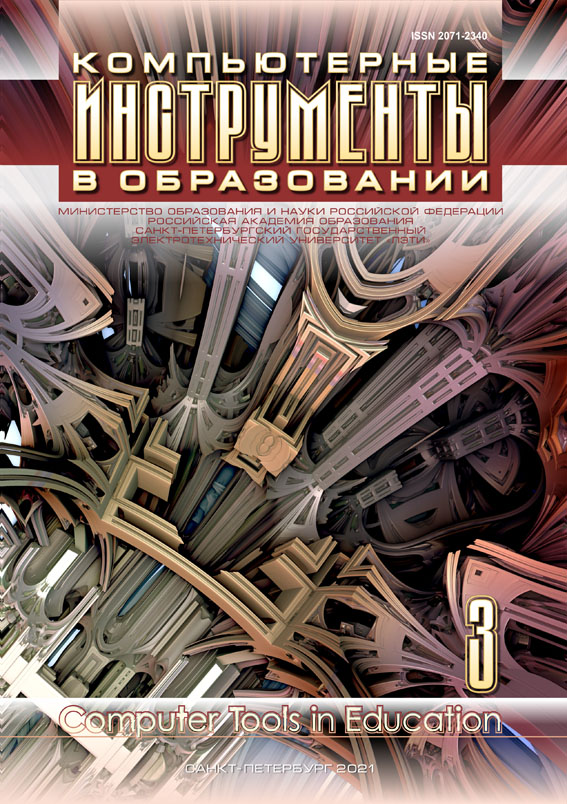New Features in MathPartner 2021
Abstract
We introduce new features in the MathPartner service that have recently become available to users. We highlight the functions for calculating both arithmetic-geometric mean and geometric-harmonic mean. They allow calculating complete elliptic integrals of the first kind. They are useful for solving many physics problems, for example, one can calculate the period of a simple pendulum. Next, one can calculate the modified arithmetic-geometric mean proposed by Semjon Adlaj. Consequently, one can calculate the complete elliptic integrals of the second kind as well as the circumference of an ellipse. Furthermore, one
can also calculate the Sylvester matrices of the first and the second kind. Thus, by means of a few strings, one can calculate the resultant of two polynomials as well as the discriminant of a binary form. Some new matrix functions are also added. So, today the list of matrix functions includes the transpose, adjugate, conjugate, inverse, generalized inverse, and pseudo inverse of a matrix, the matrix determinant, the kernel, the echelon form, the characteristic polynomial, the Bruhat decomposition, the triangular LDU decomposition, which is an exact block recursive LU decomposition, the QR block recursive decomposition, and the singular value decomposition. In addition, two block-recursive functions have been implemented for calculating the Cholesky decomposition of symmetric positive-definite matrices: one function for sparse matrices with the standard multiplication algorithm and another function for dense matrices with multiplication according to the Winograd–Strassen algorithm. The linear programming problems can be solved too. So, the MathPartner service has become better and handy. It is freely available at http://mathpar.ukma.edu.ua/ as well as at http://mathpar.com/
References
S. Adlaj, “An eloquent formula for the perimeter of an ellipse,” Notices of the American Mathematical Society, vol. 59, no. 8, pp. 1094–1099, 2012; doi: 10.1090/noti879
S. Adlaj, “An Arithmetic-Geometric Mean of a Third Kind!” in Proc. of Computer Algebra in Scientific Computing. 21st Int. Workshop, CASC 2019, Moscow, Russia, Aug. pp. 26–30, 2019, vol. 11661, 2019. pp. 37–56.
A. G. Akritas, Elements of Computer Algebra with Applications. NY: John Wiley and Sons, 1989.
A. G. Akritas, G. I. Malaschonok, and P. S. Vigklas, “Subresultant polynomial remainder sequences obtained by polynomial divisions in Q[x] or in Z[x],” Serdica Journal of Computing, vol. 10, no. 3–4, pp. 197–217, 2016.
P. E. Alaev and V. L. Selivanov, “Fields of algebraic numbers computable in polynomial time. I,” Algebra and Logic, vol. 58, no. 6, pp. 447–469, 2020; doi: 10.1007/s10469-020-09565-0
W. S. Brown, “The Subresultant PRS Algorithm,” ACM Transactions on Mathematical Software, vol. 4, no. 3, pp. 237–249, 1978; doi: 10.1145/355791.355795
D. A. Dolgov, “Polynomial greatest common divisor as a solution of system of linear equations,” Lobachevskii Journal of Mathematics, vol. 39, no. 7, pp. 985–991, 2018; doi: 10.1134/S1995080218070090
J. F. Grcar, “How ordinary elimination became Gaussian elimination,” Historia Mathematica, vol. 38, pp. 163–218, 2011; doi: 10.1016/j.hm.2010.06.003
W. Habicht, “Eine Verallgemeinerung des Sturmschen Wurzelz¨ahlverfahrens,” Commentarii Mathematici Hel- vetici, vol. 21, pp. 99–116, 1948 (in German); doi: 10.1007/BF02568028
J. van der Hoeven and G. Lecerf, “Fast computation of generic bivariate resultants,” Journal of Complexity, vol. 62, article 1014992021б 2021; doi: 10.1016/j.jco.2020.101499
A. M. Kotochigov and A. I. Suchkov, “A method for reducing iteration in algorithms for building minimal additive chains,” Computer Tools in Education, no. 1, pp. 5–18, 2020 (in Russian); doi: 10.32603/2071-2340-2020-1-5-18
V. N. Kublanovskaya, “Evaluation of a generalized inverse matrix and projector,” USSR Computational Mathematics and Mathematical Physics, vol. 6, no. 2, pp. 179–188, 1966; doi: 10.1016/0041-5553(66)90064-4
F. Lamarche and C. Leroy, “Evaluation of the volume of intersection of a sphere with a cylinder by elliptic integrals,” Computer Physics Communications, vol. 59, no. 2, pp. 359–369, 1990.
G. Malaschonok, “Generalized Bruhat decomposition in commutative domains.” in Proc. of Computer Algebra in Scientific Computing. 15th Int. Workshop, CASC 2013, Berlin, Germany, Sep. 9–13, 2013, 2013, vol. 8136, pp. 231–242.
G. I. Malaschonok, “Application of the MathPartner service in education,” Computer Tools in Education, 2017, no. 3, pp. 29–37 (in Russian).
G. I. Malaschonok, “MathPartner computer algebra,” Programming and Computer Software, vol. 43, no. 2, pp. 112–118, 2017; doi: 10.1134/S0361768817020086
G. Malaschonok, “Recursive matrix algorithms, distributed dynamic control, scaling, stability,” in Proc. of 12th Int. Conf. on Comp. Sci. and Information Technologies (CSIT-2019). Sep. 23–27, Yerevan, pp. 175–178, 2019.
G. I. Malaschonok, “LDU-factorization,” in ArXiv e-print, no. 2011.04108, 2020. [Online]. Available: https://arxiv.org/abs/2011.04108
G. Malaschonok and I. Tchaikovsky, “About big matrix inversion,” in Computer algebra: 4th International Conference Materials. Moscow, Jun. 28–29, 2021, Moscow, 2021, pp. 81–84; doi: 10.29003/m2019.978-5-317-06623-9
N. J. Mariani, G. D. Mazza, O. M. Martinez, and G. F. Barreto, “Evaluation of radial voidage profiles in packed beds of low-aspect ratios,” The Canadian Journal of Chemical Engineering, vol. 78, no. 6, pp. 1133–1137, 2000; doi: 10.1002/cjce.5450780614
J. J. Sylvester, “A method of determining by mere inspection the derivatives from two equations of any degree,” Philosophical Magazine, vol. 16, pp. 132–135, 1840.
J. J. Sylvester, “On the theory of syzygetic relations of two rational integral functions, comprising an application to the theory of Sturm’s functions, and that of the greatest algebraical common measure,” Philosophical Transactions, vol. 143, pp. 407–548, 1853.
B.-X. Xu, Y. Gao, and M.-Z. Wang, “Particle packing and the mean theory,” Physics Letters A, vol. 377, no. 3–4, pp. 145–147, 2013; doi: 10.1016/j.physleta.2012.11.022

This work is licensed under a Creative Commons Attribution 4.0 International License.







